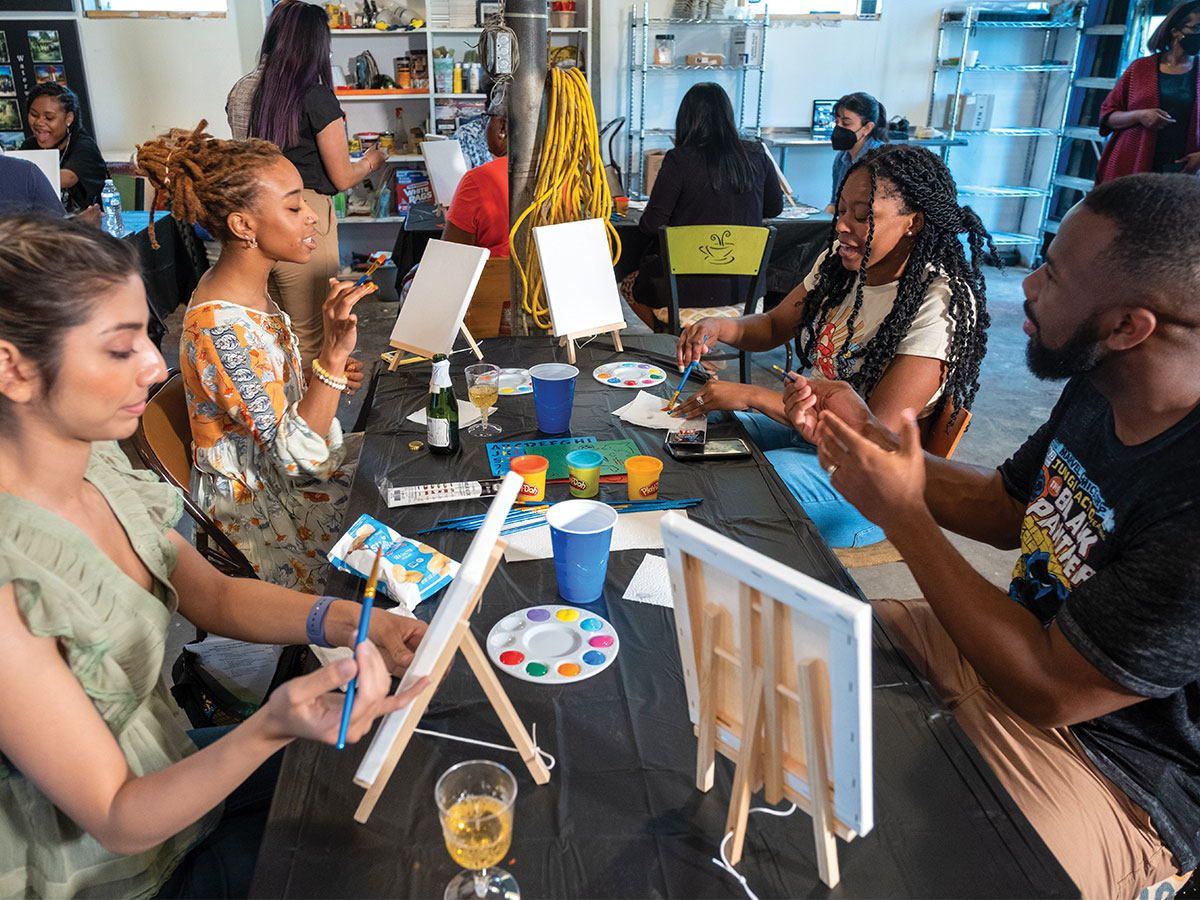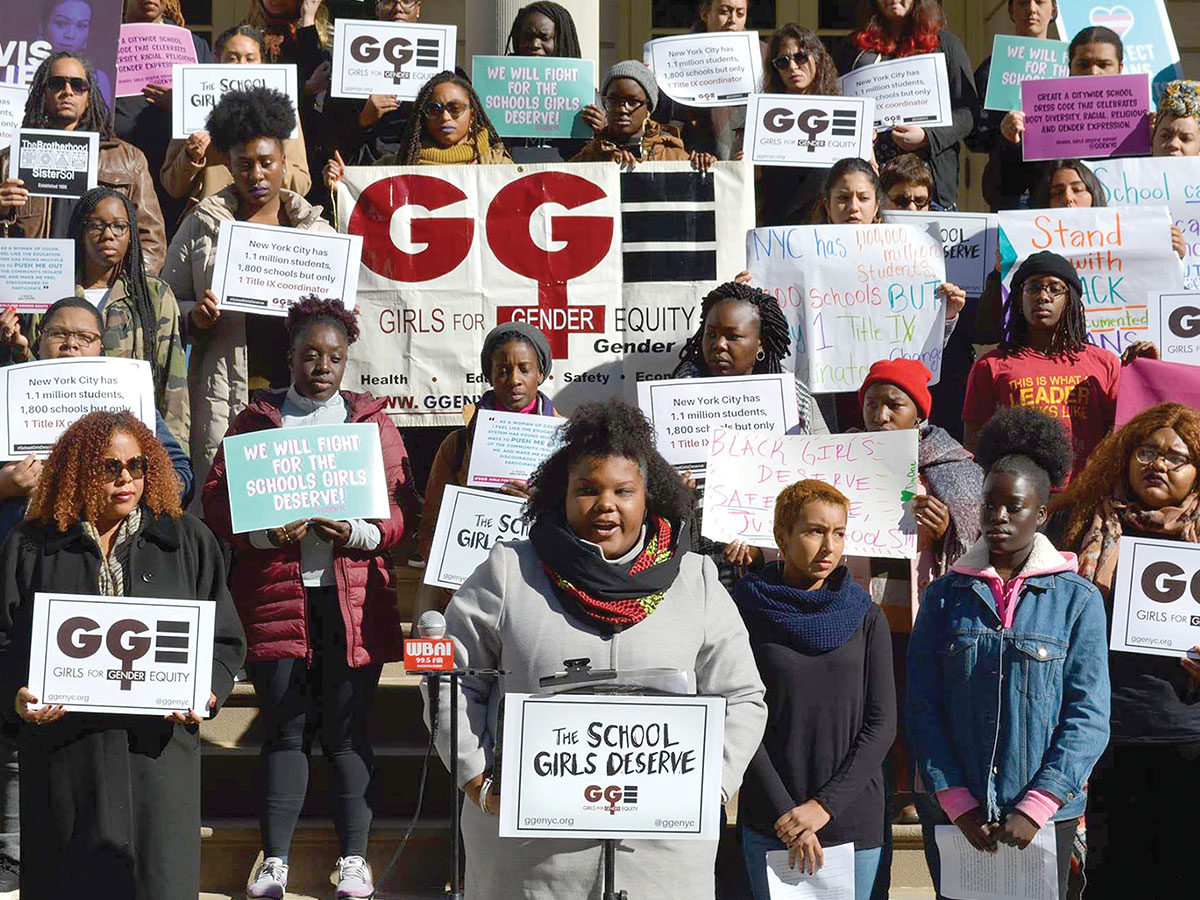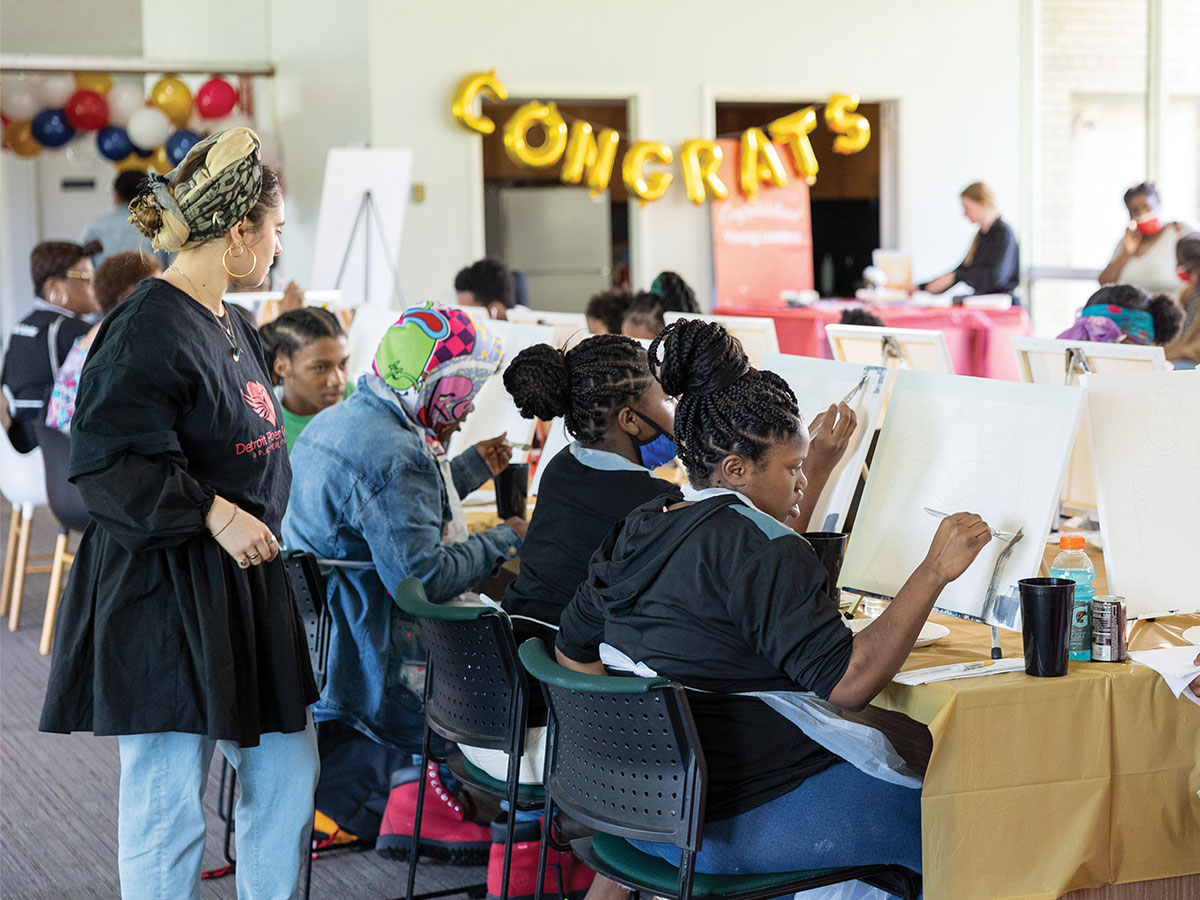Journal | Issue 13
Organizational Learning
The Onus is On Us: Reporting Through Documented Site Visits

Funder Profile: New York Foundation
The New York Foundation is a steadfast supporter of community organizing and advocacy in New York City. The Foundation believes that the resilience and vitality of its neighborhoods is the city’s greatest resource. Its grants support community-initiated solutions to solve local problems, constituents mobilizing for adequate and equitable resources, and groups organizing a collective voice among those whose voices have not been heard.
For more than 100 years, the New York Foundation has supported efforts that address a wide diversity of issues, but all grantees share a commitment to inspire New Yorkers to become more informed, active participants in the life of the city. Today, its grant program encompasses both start-up grants to emerging groups – particularly those with few other sources of financial support – and longer-term institutional support. The Foundation influenced many changes in the philanthropic field during its history, primarily around making foundations processes more transparent and accessible. The Foundation also has created programs to help newer organizations build their capacity to thrive.
We spoke with Maria Mottola, who has been the Executive Director of the New York Foundation since 2003. She served as a Program Officer from 1994 to 2002. Prior to joining the foundation, she was the executive director of the City Wide Task Force on Housing Court, and directed neighborhood programs and community organizing at Lenox Hill Neighborhood House. Ms. Mottola has been a adjunct professor at New York University School of Social Work, and Hunter College Graduate School of Urban Affairs and Planning. Ms. Mottola was co-chair of the Neighborhood Funders Group, a national affinity group from 2003 to 2006. She currently serves on the board of the Hook Initiative. She received her undergraduate degree at the University of Toronto and a master’s degree in social work from Fordham University.
Describe your approach to grant reporting:
New York Foundation’s approach to reporting is intentionally streamlined. The start-up organizations we support generally receive funding for five years and more established organizations receive support for three years. Grants are renewed each year. We ask for an annual report, which is both a reflection on the work of the last year and a forecasting of what is coming up. Our interim reporting is conducted through site visits and documented by our staff.
The New York Foundation is known for funding organizations in their earliest stages and groups operating with limited resources. Sometimes the Letter of Inquiry we receive is the first time the group’s founders have outlined their vision on paper to a wider audience.
In this context that I’ve described, reporting has always been a good way for us to touch base with groups in the start-up phase, because our program officers are often working with fairly limited information. Reporting allows us to build our understanding of the work, grow our relationship, and ultimately build the case for the funding over time. Our board is supportive of high risk grant-making and they understand that our grants fund organizations that are trying new things or working on strategies that may change over time. During that exploratory phase, our trustees aren’t looking for reasons to cancel grants. Instead, when grantees face challenges, trustees ask: “how can we best support that organization?”
Let’s back up and talk about the evolution of your approach. Have you always had such a streamlined and relational reporting practice?
In our early days, a grant was given to an organization “for its good work” – it was all extremely trust-based and relationship-based. At that time, reports were just letters from the grantee about how things were going. And because this was before the days of websites and social media, written reports were often the first you’d heard from the group since making the grant – so we went into the site visit armed with information from the report and that was about it.
Previously, groups submitted a five-month report and an annual report. We used to require an itemized accounting of the money spend in the first part of the grant before we would release the second part of the funding. Our financial person would calculate what had been spent and what hadn’t – and the grants management and fiscal team would track down to the penny how much money had been spent. Because we were sometimes funding groups that didn’t yet have their 501(c)(3) status, we wanted to ensure that the money had been spent for charitable purposes. And we spent an inordinate amount of time in this endeavor.
It took several conversations with our attorney to realize that this wasn’t needed. Now we ask for a financial report after 12 months to account for how our grant was spent. And we no longer spend our time trying to account for every penny and releasing payments twice a year. We have put that time toward activities that we consider more meaningful, like supporting the capacity growth of these grassroots groups.
So how does reporting work now?
Now, we no longer require a written interim report. To get there, we took on a little more work ourselves at the mid-way point. We use our site visit as an interim check-in point, and we type a memo for the file. Groups that are scheduled to be renewed apply in writing, and that application asks both for a reflection on what happened and a forecast of what’s coming up.
Basically, we decided it was our job to pay attention to how groups were doing and communicating about themselves. For us, the site visits are a chance to check in with the grantee and learn more about their capacity needs. The most important thing is to find out from grantees themselves about how it’s going, what they are doing to track their progress and improve their work. Because of the relationships we build we hear so much that is important – stuff like the executive director’s plans to leave, struggles with board chair, or worries about financial stability.
At our staff retreat this year, we also acknowledged that part of monitoring the progress of our grantees happens through social media and other electronic forms of communicating. So now our communications manager helps us monitors grantees’ social media to see how our grantees are communicating about their work, their constituencies, and their progress
What kind of guidance do you give your program staff as they enter these conversations?
We have a site visit assessment tool that we use to guide our conversations. It’s not a report card or something that needs to be followed letter by letter, but it does serve as a way to anchor the conversation. We then use our notes to answer four to five questions in GIFTS [our grants management system] to document the conversations. They are pretty basic: What did you set out to accomplish and what kind of progress did you make? How did things change along the way? How have you measured your results? What types of challenges did you encounter and how can we help you with them? We summarize any follow-up that we discussed in an email to the grantee, which holds us accountable for anything we may have promised to do.
We also have a set of questions for the final report and reapplication, which basically mirror those that we ask and document in the interim report. For the purpose of continued funding, we also ask grantees to tell us how continued funding will be used.
This sounds really sensible for you and the grantee. Any downsides?
This isn’t a downside, but we think it’s important to keep in mind that reporting in writing can provide a grantee with an opportunity to reflect in a more formal way – so sitting around chatting during a site visit might not offer them the same level of deliberation that thoughtful writing can offer.
We also realize that site visits – even friendly ones – can be problematic in their own way. They take time and they can be stressful for organizations. We are also revisiting our desire to meet with program participants as part of the site visits. Is it fair to ask program participants to repeat their private stories and reopen painful conversations with people they do not know just to help the nonprofit get funding?
One thing we realized is that our grantees’ work is often public and visible. They invite us all the time to their events and their programs. In the past, it was difficult to attend, because we were too busy reading reports and doing paperwork. So we asked ourselves: why don’t we say yes to more of these things and stop doing so much paperwork? Now we feel that the onus is on us to attend more events they are already doing! We are trying to say yes to as many events as we can and use these authentic opportunities as our site visits. And then, as needed, we make sure to have a conversation by phone or in person annually to learn more about capacity needs.
What do you do with the information you glean from site visits and written reports?
To prepare to make a case to our trustees for continued support, we draw upon our site visit experience and notes, any communication we’ve collected from the grantee directly during the course of the year, and the grantee’s written renewal application. All of these are taken into account when we produce our write-up for the board meeting docket.
How has this worked for you? What are the benefits of your approach?
The benefits are what you’d expect – relationship building, flexibility, and right-sized reports for our relatively modest grants. We have a long-term relationship with grantees, so we want our reports to be part of an ongoing conversation that is more two-way. What we find from new grantees is that they appreciate reporting to us because part of the conversation is about how we hold ourselves accountable.
Every time we review and change our reporting process, I think that our approach gets better and better. But we also need to be careful that we’re not creating new problems by solving old problems. We don’t want to go so far into the “we’re all in this together!” feeling that we ignore actual boundaries and the power dynamic. As I mentioned earlier, we don’t want the reporting and site visits to become loose and informal to the point that the process disadvantages some groups.



